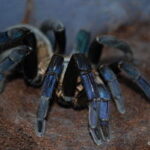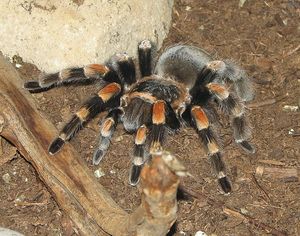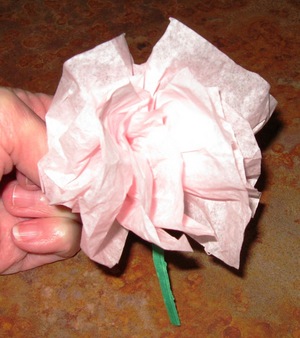Chilean rose hair tarantulas, commonly called “Rosie’s” by arachnid enthusiasts are one of the most common and popular pet spider species. Known for their docile nature and beautiful coloring, Chilean rose hairs are one of the few tarantula species that are commonly available at pet stores. Whether you are an experienced spider handler or are just beginning the hobby, the Chilean rose hair is an ideal pet.
Chilean rose hair tarantulas are native to the desert regions of Chile and are a terrestrial species. When keeping this spider as a pet, it is best to mimic their natural habitat by providing your tarantula with a long but short enclosure and a “hide” such as a small, hollow log. There should also be at least 3 inches of substrate such as coconut fiber or soil in the enclosure. The enclosure should be kept around 80 degree Fahrenheit and 70% humidity. In order to keep your Rosie’s enclosure warm, use an under tank heating pad as opposed to a heating lamp. Tarantulas shy away from bright lights and use of a heating lamp will agitate your spider. Spiderlings can be kept in vials or pill bottles, while adults can be kept in 5 to 10 gallon aquariums.
Coloring on Chilean rose hair tarantulas varies from pink to red to brown. At maturity, Rosie’s are typically five to six inches in leg span. Chilean rose hairs are a long lived species, with most spiders living up to 20 years in captivity when properly cared for.
Your Chilean rose hair will eat any invertebrate that it can overpower. Crickets are the most common food choice, though you can also feed your spider meal worms, beetles and grasshoppers if desired. One or two medium sized crickets once per week will provide adequate nutrition for your spider. The abdomen should be fully rounded without looking engorged. If you purchase your Rosie as a sling, feed it pinhead crickets and refrain from putting a water dish in the enclosure. Since tarantula’s lungs are located in their abdomen, it is very easy for them to drown. A shallow water dish can be used once your Rosie reaches a leg span of three inches.
Rosie’s are very docile and sweet in nature, making them an ideal species to own if you want to handle your tarantula. However, like all species, they are venomous and do have urticating hairs on their abdomen that they will fling if they feel threatened. When handling your Rosie, be sure to be gentle and calm. Do not ever hold your spider more than a few inches above the ground. Even a short fall can cause the abdomen to rupture which will prove to be fatal for your eight-legged friend.
Like all species, Chilean Rose hair tarantulas will periodically molt in order to grow. Typically speaking, the molting process will occur once every month or two until the spider reaches maturity and will occur less often once it has achieved it’s adult size. You may notice your tarantula refuse food for up to a month prior to molting, though typically this time period is closer to one week. During the molting process, your Rosie will lay on it’s back and will appear dead. Do not touch or disturb your Rosie while it is molting, as this is when it is most fragile. The spider will break out of it’s old exoskeleton and will be soft and delicate until it’s new exoskeleton hardens. Do not feed your spider for at least a week after molting, as even a cricket can severely injure your spider if it has not hardened.
References:
http://www.tarantulaguide.com/tarantulas/chilean-rose-hair-tarantula/
http://lllreptile.com/info/library/animal-care-sheets/invertebrates/-/rose-hair-tarantula/







